MARKET OVERVIEW
The Global Survey Equipment Market is a specialized sector exclusively involved in designing, developing, and providing advanced products and technologies capable of creating highly accurate measurements, mappings, or analyses of physical space. Thus, this sector caters to an enormous scope of industries such as construction, agriculture, energy production, and environmental monitoring so that these sectors would be offered with the much-needed hard and soft technologies for making and interpreting spatial data measurements. As industries around the world increasingly rely on accurate geospatial information for decision-making and planning, the role of survey equipment continues to expand and evolve.
The heart of the Global Survey Equipment Market is in its ability to deliver innovative tools that address the growing complexity of projects in diverse sectors. From high-precision GPS devices and total stations to cutting-edge drones and 3D scanning technologies, survey equipment allows accurate capture and analysis of geographic data. Such tools increase the confidence with which industries undertake their projects, thereby reducing errors and enhancing efficiency. Beyond just the tools, the market extends into software platforms that process and visualize data in ways that make them accessible and actionable for professionals in a wide range of disciplines.
With growing industry digitization, the Global Survey Equipment Market will continue to push boundaries in the realm of data collection and analysis through the use of emerging technologies. Integration into AI, machine learning, and cloud-based platforms will redefine data processing, storage, and exchange. Real-time insights into this stream will then quickly yield faster environmental and project-specific solutions. This market will be very focused on innovation, which will probably redefine the traditional ways of surveying to suit the demands of a technology-driven era.
The Global Survey Equipment Market is versatile enough to accommodate both large-scale industrial applications and smaller niche projects. Whether it is creating detailed urban planning maps, monitoring agricultural yields, or assessing the structural stability of buildings, survey equipment plays a fundamental role. Its contributions are best seen in areas such as renewable energy, where proper site analysis would determine the viability of solar farms or wind energy projects. Similarly, in construction, these tools ensure the precise alignment of infrastructure, minimizing costly adjustments during later stages.
The future of the Global Survey Equipment Market will also reflect a growing trend towards sustainability and environmental consciousness. As industries turn toward more eco-friendly practices, survey equipment will back initiatives to reduce environmental impact. Tools that can assess terrain with minimal impact on natural ecosystems will be more valuable, such as those that assess the terrain with minimal disruption to natural ecosystems. Such trends will underscore the market's ability to evolve with changing global priorities while remaining integral to advancing progress.
The Global Survey Equipment Market leads technological innovations that help equip companies with the tools and solutions required to deal with modern industry complexities. Through embracing new technologies and adapting to specific sector needs, the market will shape how people think of physical space and how they can utilize it. Its ongoing evolution will undoubtedly influence the strategies and outcomes of industries worldwide, ensuring that it remains an integral part of future progress.
Global Survey Equipment market is estimated to reach $9,379 Million by 2031; growing at a CAGR of 5.1% from 2024 to 2031.
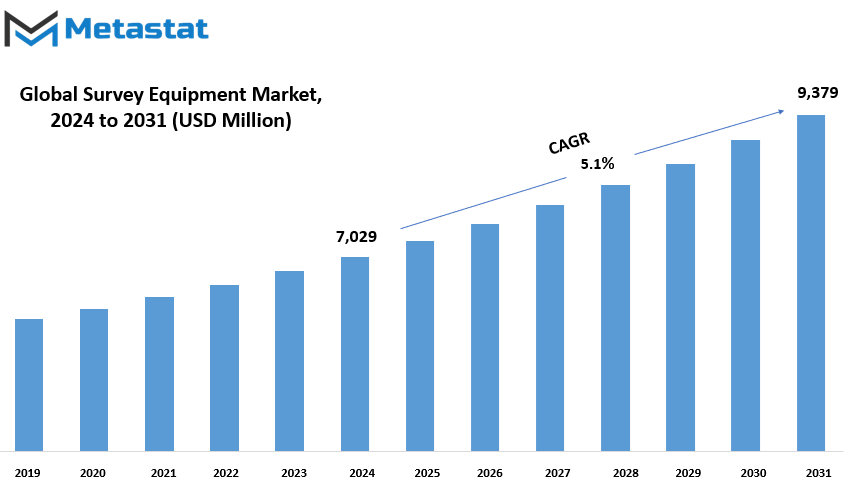
GROWTH FACTORS
The rising demand for survey equipment is largely because of the increased infrastructure development and construction work worldwide. With growing cities and urban areas modernizing, there has been an ever-increasing need for the measurement and mapping tools that can ensure accurate and proper results. The improvement in technology, including GPS systems, drones, and 3D scanning, has also enhanced the performance and efficiency of survey equipment. These innovations can get better data for users as well as save time and human effort spent on traditional methods of surveying. Due to the advanced tools, this sector will soon become necessary for companies dealing with constructions, mines, and farmlands.
However, some restrictions might be there. The largest is the pricey nature of the advanced instruments used. The smaller organizations or companies whose budgets are relatively narrow will not be in a position to afford the advanced equipment. In addition, operation problems arise from complexity issues with the technologies. Generally, sophisticated survey equipment require technical persons to perform efficient tasks, and training them proves both time-consuming and very expensive. These might reduce some organizations from implementing newer technologies. However, the advancement of UAVs and drones is opening new spaces in the market. Currently, these devices are significantly used for surveying of remote or inaccessible areas for a more cost-effective alternative to traditional methods. Moreover, advanced sensors and camera-equipped drones can collect detailed information in less time with minimal human intervention, which makes them much more useful for applications involving environmental monitoring, land surveying, and infrastructure inspections.
As technology continues to improve, the adoption of modern survey equipment is going to increase, especially with the recognition of long-term benefits by firms in investment in these tools. The challenges of high costs and operational complexity will slow the adoption in some segments; however, the overall market will grow as new solutions address such issues. The prospects of efficient and accurate performance are expected to make survey equipment a prominent feature in all industries utilizing precise measurements and data accumulation. The trend of advanced technologies, including drones in survey operations, will thus continue to impact the survey market, making it offer promising growth prospects in years to come.
MARKET SEGMENTATION
By Type
Various classifications of surveying equipment include several categories, and this equipment is used specifically to fulfill the requirements within a particular area of surveying and mapping. There's one very important group-optical survey equipment, like the one consisting of total stations, which includes theodolites for measuring angles and distance-orienting precision in creating maps and designs during construction, land development, and other projects. Newer technologies notwithstanding, there are still many types of surveying tasks they must perform.
Another important type is GPS survey equipment, which uses satellite signals to determine the exact position of points on the Earth's surface. GPS survey equipment is highly accurate and efficient and is very useful for large-scale surveys or when traditional methods would be too time-consuming or difficult. These tools have become essential in various industries, from construction to agriculture, where precision is key.
Laser scanning tools are also a category of equipment that has gained recent popularity. Laser scanners depend on light to measure distances for the generation of detailed models of landscapes or structures in 3D. This equipment can process vast amounts of data in real time and is, therefore appropriate for high detail projects such as map building and terrain feature analysis. The ability to capture precise, three-dimensional data in a short amount of time will continue to make laser scanning a valuable tool for surveyors.
There are added conveniences and accuracies with robotic survey equipment. These systems combine optical and GPS technologies with control that allows the surveyor to remotely operate instruments. Such would greatly increase efficiency in places where it is otherwise challenging to manually operate equipment. The automated nature of the tool would further decrease the chances of human error in making data more reliable.
Drones and UAV-based surveying equipment have become popular over the years. They are aerial devices that can take data from places difficult to access or places that may be dangerous to access. Drones are particularly handy in surveying large lands, such as forests or mining sites, and collect data quickly and accurately.
Another tool used in modern surveying is mapping and GIS (Geographic Information System) software. With these, analysts can analyze and interpret the collected data to change raw measurements into maps and models that might be used in planning and making decisions. Such programs continue to advance and offer better features and capabilities that would improve the accuracy and usability of the data.
Other types of surveying equipment include specialized tools designed to meet specific needs, from simple measuring devices to advanced geotechnical instruments. Each piece of equipment has a role in ensuring that surveys are accurate, efficient, and reliable.
By Application
These different applications of the market split into several areas with distinct focuses. Some of them include land surveying, marine surveying, mining surveying, environmental surveying, archaeological surveying, and urban planning, and infrastructural surveying. All of them provide critical data gathering and analytics for decision-making.
Land surveying is the most common form of surveying. The process is basically measuring and mapping land to determine the boundaries, topography, and property lines. This particular survey is vital in property transactions, construction projects, and even land development. It ensures that buildings, roads, and all other structures are built at the correct location.
Marine surveying is a survey of bodies of water, such as rivers, lakes, and oceans. It can be used to determine the condition of ships, boats, and other marine structures like ports or offshore oil rigs. Marine surveying provides safety and prevents accidents by highlighting possible hazards or damage to vessels or marine structures.
Mining surveying is the extraction of minerals and resources from the earth. In this field, surveyors measure and map mines, assess mineral deposits, and monitor the environmental impact of mining activities. This type of surveying helps in planning efficient and safe mining operations while reducing harm to the environment. Environmental surveying involves the process of assessing human activities against the environment. It gathers data on air and water quality, pollution levels, and land use. Environmental surveys help monitor environmental changes and ensure compliance with regulations in protecting natural resources and promoting sustainability.
It involves identifying and mapping ancient sites and artifacts. This is an important kind of surveying, which will help understand historical civilizations, map ruins, and guide excavation efforts. Archaeological surveys aid in the preservation of cultural heritage and offer insights into past societies. Urban planning and infrastructure surveying focus on cities' and towns' growth and development. It consists of planning and designing roads, utilities, public spaces, and buildings. Surveying in this area makes way for efficient, safe, and sustainable urban environments that would fit the needs of increasingly urbanized populations. Every application is important in all other industries and fields so that development is safe, efficient, and sustainable.
By End-User
The market is segmented into several end-user segments, with specific needs and requirements for each. Among the most important is the construction industry, where demand is constant for materials, equipment, and services. All construction projects, from residential buildings to massive infrastructure works, require solutions that ensure safety, quality, and efficiency. These factors drive the market, as companies seek products and services that improve productivity and meet regulatory standards.
Another major sector is the oil and gas industry, which calls for specialized equipment and services to explore, drill, and produce. This industry depends more on advanced technologies that improve the extraction process and ensure safe transportation of oil and gas. Companies in this sector require products that help them operate in a complex way and reduce risks concerning environmental impact and safety hazards.
Mining is also considered part of the market that calls for equipment and technologies to extract valuable minerals and metals. This sector does involve some heavy machinery that innovatively improves productivity to provide products while maintaining appropriate standards within often challenging settings. Furthermore, mining operations require a relationship with environmental policies. Environmental regulations drive the demand for green products and technologies that lessen their footprints on the environment.
The government and public sector have an important role in pushing the demand in the market since most of their projects involve huge infrastructures, such as public services and infrastructure. Products and services used in such projects have to meet government standards and regulations, creating a demand for high-quality, compliant solutions. It also includes defense, health, and public transportation projects that depend on advanced technology and infrastructure solutions.
The other sector that has an important influence on the market is agriculture. Farmers and companies operating in the agricultural industry have been embracing high technologies for crop yield improvement, effective resource management, and sustainability. With the ever-growing need for food, efficient agriculture with minimal waste and impact on the environment is now important.
The other sector that has an important influence on the market is agriculture. Farmers and companies operating in the agricultural industry have been embracing high technologies for crop yield improvement, effective resource management, and sustainability. With the ever-growing need for food, efficient agriculture with minimal waste and impact on the environment is now important.
It also segments the market by focusing on sustainability, environmental protection, and monitoring. The products and services used by such agencies are aimed at helping to protect natural resources and efforts in climate change.
Finally, utilities and infrastructures also generate demand at the market level. Their utility products need constant upgrading and modernization in such sectors as water supply, energy distribution, and transportation networks. All such sectors rely on high-performance solutions to continuously maintain their critical services alive.
|
Report Coverage |
Details |
|
Forecast Period |
2024-2031 |
|
Market Size in 2024 |
$7,029 million |
|
Market Size by 2031 |
$9,379 Million |
|
Growth Rate from 2024 to 2031 |
5.1% |
|
Base Year |
2022 |
|
Regions Covered |
North America, Europe, Asia-Pacific Green, South America, Middle East & Africa |
REGIONAL ANALYSIS
The global Survey Equipment market can be categorized based on geography into several key regions such as North America, Europe, Asia-Pacific, South America, and the Middle East & Africa. It breaks down each of these into particular countries to give detailed understandings of their contribution and dynamics in the market. North America comprises the United States, Canada, and Mexico, which are key players because of their well-developed technological infrastructure and increasing demand for survey equipment across different industries. The market in Europe is spread across countries like the United Kingdom, Germany, France, and Italy, among others that fall under the Rest of Europe.
These regions are supported by the presence of established industrial sectors and investment in infrastructure projects, thus fueling demand for survey equipment. On the other hand, the Asia-Pacific region comprises India, China, Japan, and South Korea among others under the Rest of Asia-Pacific category. This region's fast pace of industrialization and urbanization is one of the reasons for increased adoption of high-tech surveying technologies. South America is another important area in this market, with Brazil and Argentina standing out due to their growing construction and agriculture industries.
The Rest of South America includes smaller but steadily growing markets that also contribute to the overall demand for survey equipment. Last, the Middle East & Africa region is classified into GCC Countries, Egypt, South Africa, and other regions under the head of Rest of the Middle East & Africa. This region has also concentrated on infrastructure development, mainly in the countries of GCC, and needs modernized survey methods. By subdividing the Survey Equipment market into geography, it further gives an understanding of what regions contribute to its expansion. The unique economic factors in each region, technological improvement, and industrial demands cause certain changes in the market environment, giving scope for enterprises to focus on regional level strategies. This division is helpful for stakeholders to find the potential area of their business expansion and investment while considering global trends.
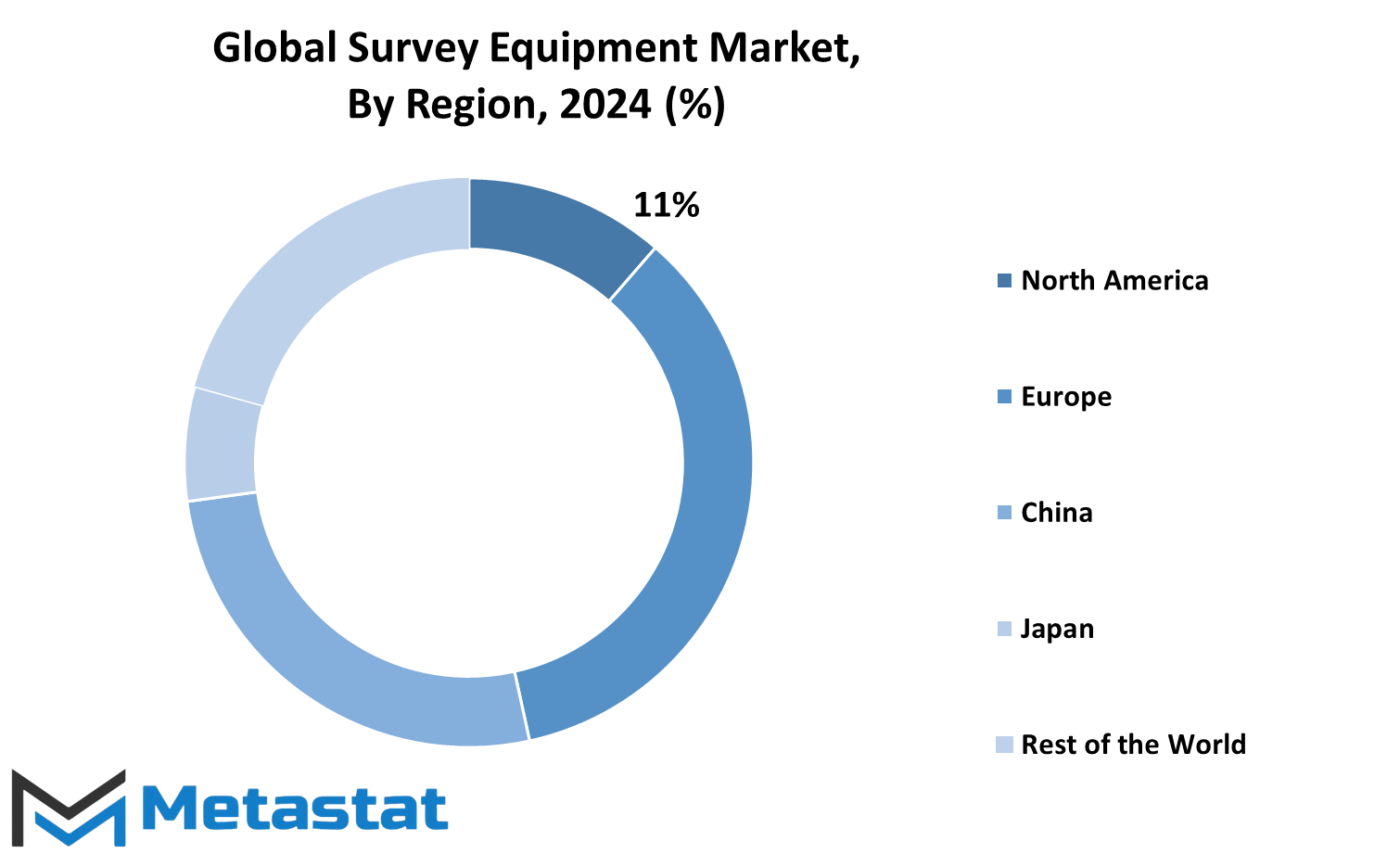
COMPETITIVE PLAYERS
The survey equipment industry is characterized by some major players who significantly contribute to the progress in this domain. These companies play important roles in shaping the kind of technologies and tools for use in surveying applications, ranging from land measurements to navigation and imaging. Among such notable names in this category are GUANGDONG KOLIDA INSTRUMENT CO., LTD., Hexagon AB, Hi-Target, and PENTAX Surveying. Each of these companies offers its experience to the market, with a wide selection of products that are tailor-made for professionals.
The Robert Bosch Tool Corporation, Shanghai Huace Navigation Technology Ltd., and South Surveying & Mapping Technology CO., LTD. are also notable for the contributions that they make in this industry. These firms focus on offering reliable and innovative solutions for precise measurements and mapping. Suzhou FOIF Co., Ltd., Topcon Corporation, and Trimble Inc. are companies popularly known for the more advanced equipment which accommodates both the conventional and current methods of surveying. In fact, Trimble Inc. specializes in solutions which make any surveying operation highly precise and efficient.
Stonex and Ruide Surveying Instrument Co., Ltd. are other major players who come with innovative technologies as per the requirements of a specific market. Sanding (Shanghai) Surveying Instrument Co., Ltd. and Jafri Survey Instruments also act as major providers for the industry, as they provide various tools for support to professionals in their different fields.
Hemisphere GNSS is one of the biggest names in global navigation satellite systems, while Vexcel Imaging, a subsidiary of Microsoft, is a great name for imaging solutions used in advanced surveying and mapping projects. Navcom Technology, Inc., a subsidiary of John Deere, has made a name for navigation technology that supports the precision demands of land-based surveying.
Lastly, Land Surveyors United holds a unique position; it is a community platform driven by professionals that discuss their knowledge and share as many resources as possible, thereby making the companies an engine behind innovations and developments in this sector of the surveying equipment industry, thereby delivering the right tools for every surveyor to carry on his or her work more easily and with more precision and accuracy. By addressing the varying demands of professionals, these organizations continue to play a vital role in advancing the field of surveying.
Survey Equipment Market Key Segments:
By Type
- Optical Survey Equipment
- GPS Survey Equipment
- Laser Scanning Equipment
- Robotic Survey Equipment
- Drones and UAV-Based Surveying Equipment
- Mapping and GIS Software
- Others
By Application
- Land Surveying
- Marine Surveying
- Mining Surveying
- Environmental Surveying
- Archaeological Surveying
- Urban Planning and Infrastructure Surveying
By End-User
- Construction Industry
- Oil and Gas
- Mining Industry
- Government and Public Sector
- Agriculture
- Environmental Agencies
- Utilities and Infrastructure
Key Global Survey Equipment Industry Players
- GUANGDONG KOLIDA INSTRUMENT CO., LTD.
- Hexagon AB
- Hi-Target
- PENTAX Surveying
- Robert Bosch Tool Corporation
- Shanghai Huace Navigation Technology Ltd.
- South Surveying & Mapping Technology CO., LTD.
- Suzhou FOIF Co., Ltd.
- Topcon Corporation
- Trimble Inc.
- Stonex
- Ruide Surveying Instrument Co., Ltd.
- Sanding (Shanghai) Surveying Instrument Co., Ltd.
- Jafri Survey Instruments
- Hemisphere GNSS
WHAT REPORT PROVIDES
- Full in-depth analysis of the parent Industry
- Important changes in market and its dynamics
- Segmentation details of the market
- Former, on-going, and projected market analysis in terms of volume and value
- Assessment of niche industry developments
- Market share analysis
- Key strategies of major players
- Emerging segments and regional growth potential



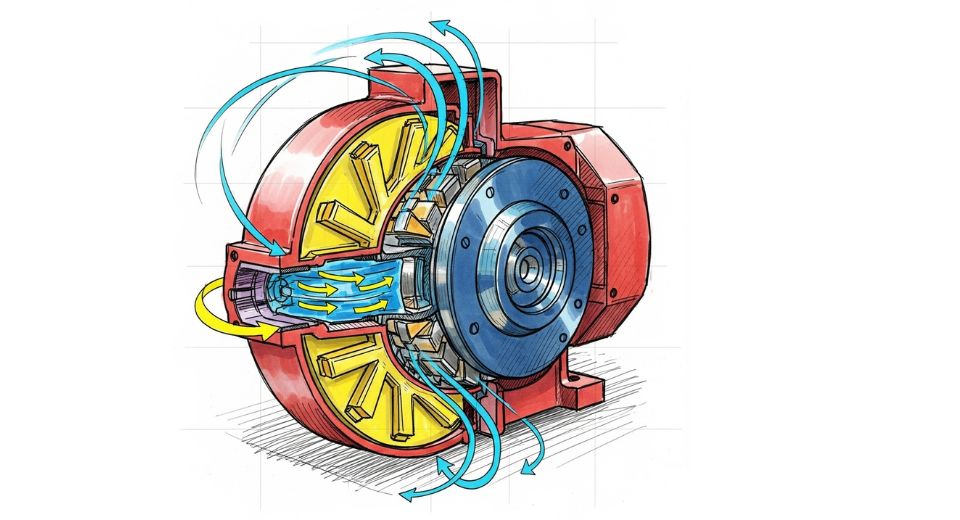
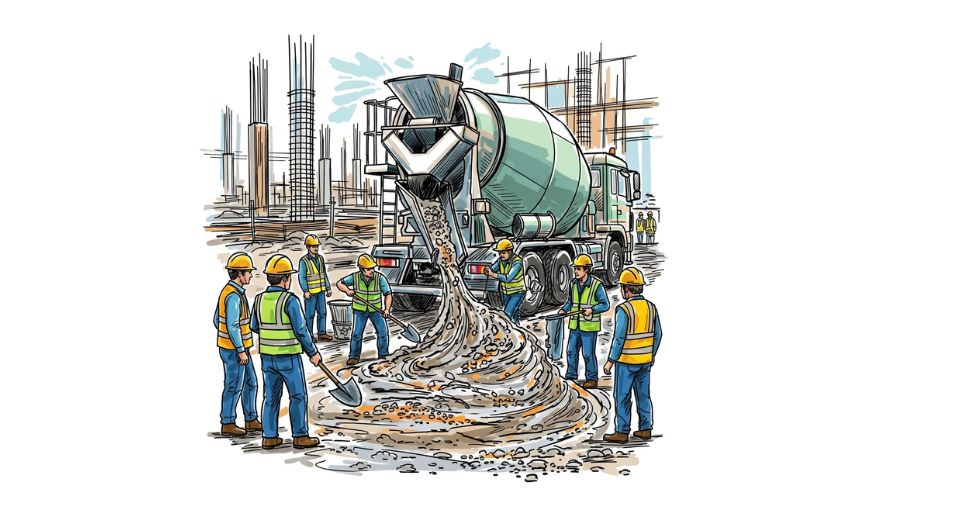
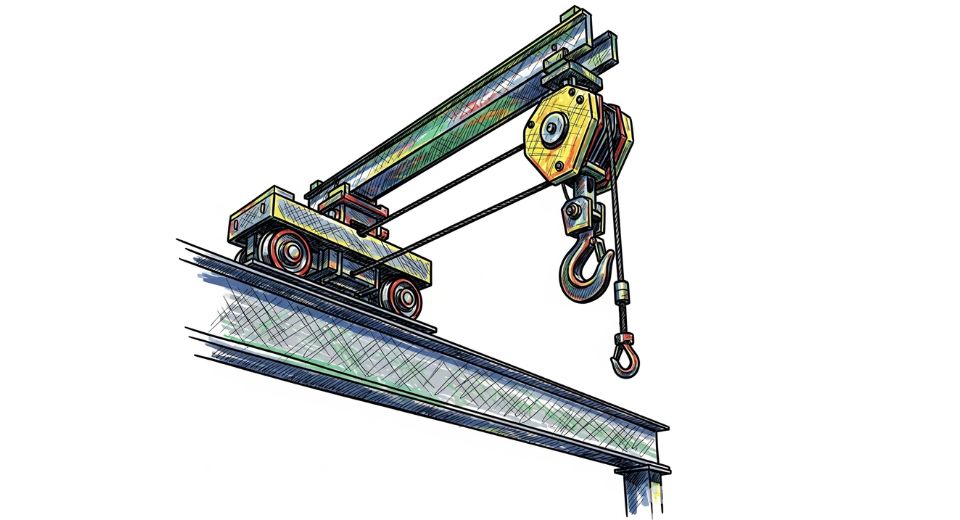


 US: +1 3023308252
US: +1 3023308252






